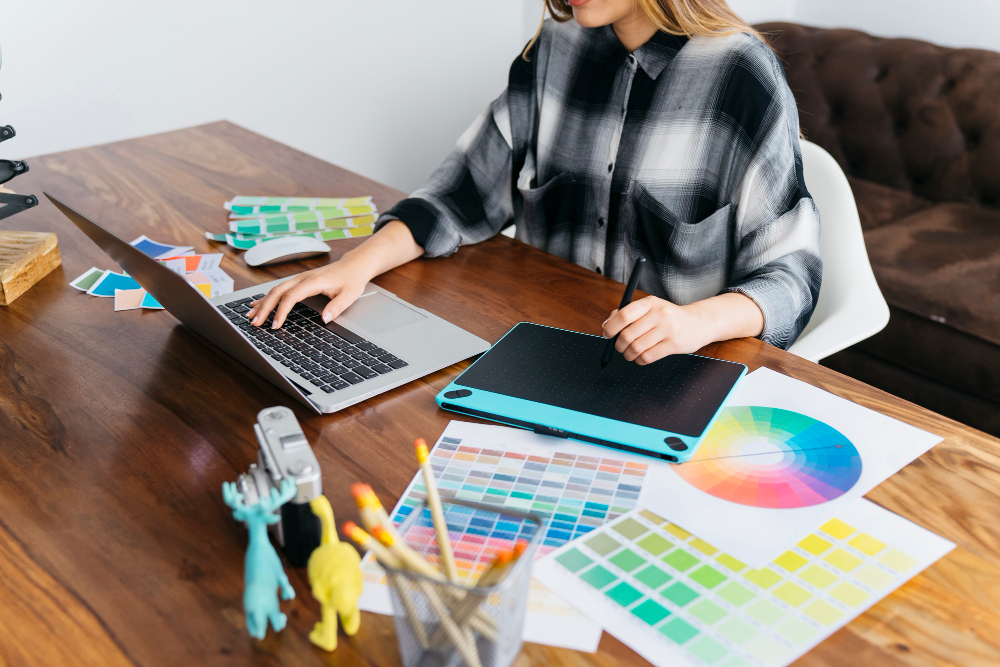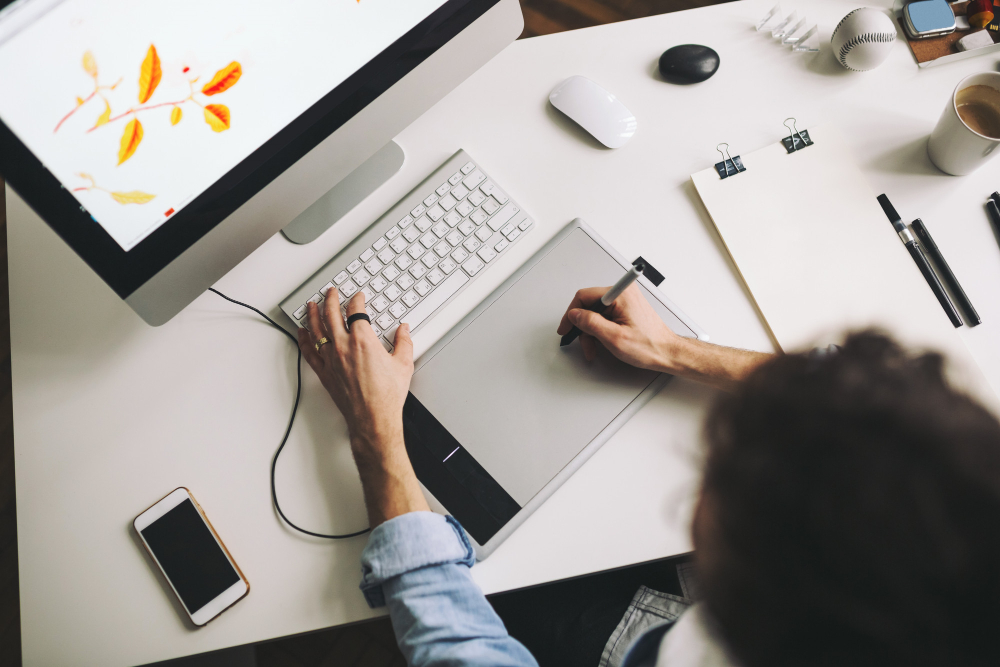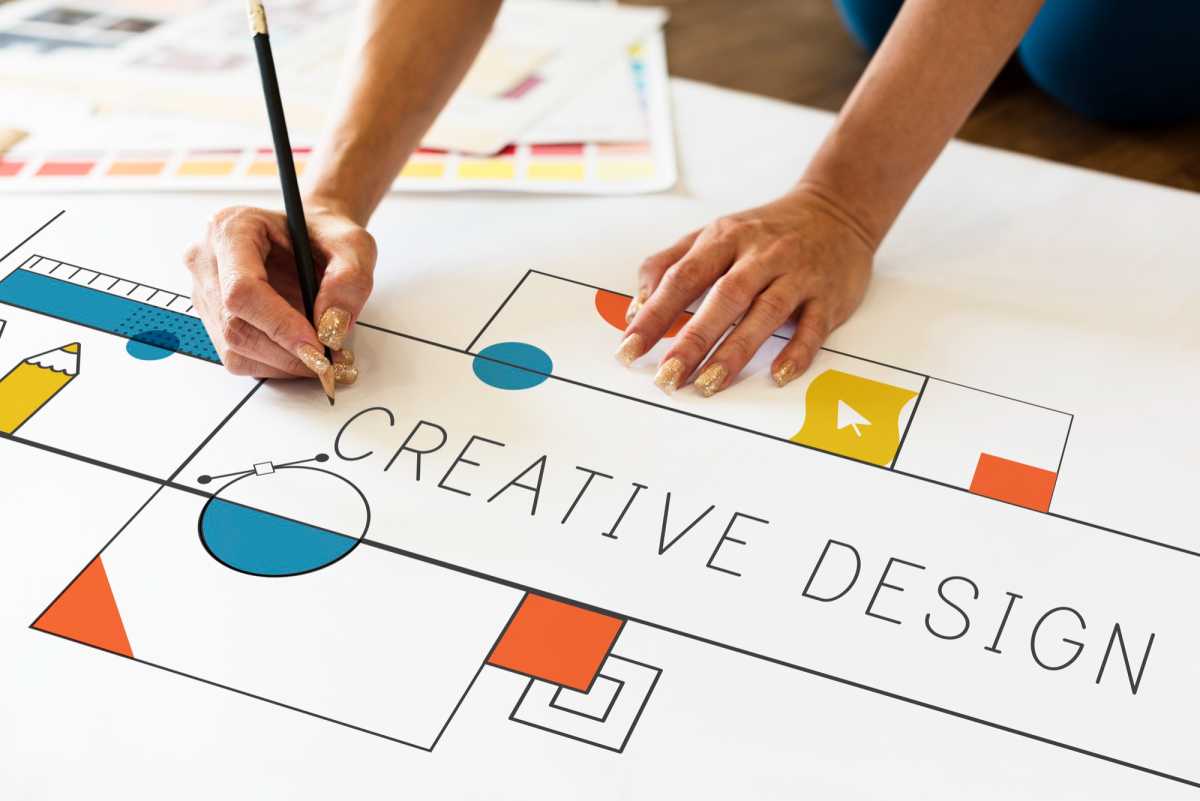Many talented and artistic people wish to see their talent become a viable career path and start an online business with it. And in the digital era, art and design have gone from paper to screen, turning commercial artists from painters to graphic designers. Many people aspire to do so. So in this article, we’re going to help you out by listing down 15 of the best graphic design tips to get your career started. By the end, you’ll have a more streamlined view of how to begin!
1. Have a mood board spread

All great designers have their inspirations. A mood board is where you gather those inspirations if you didn’t know already. Images, fonts, illustrations, layout references, color palettes, etc., convey similar design cues and feel to what you want to create yourself. Collecting many references will make you see similarities between your inspirations that’ll help spark your own creativity.
2. Plan out your design
Really think about the end product of your design, even the little things. Think about the design’s objectives, purpose, what you want people to see and what they should take away from it. Start with one or more rough sketches to plan out your design and where the multiple elements and things will go. And keep that mood board in view at all times. Planning and mapping out your design beforehand could help you save hours on your computer and maybe some headaches and head scratches.
3. Make it just simple enough
Clarity and legibility are of core importance to design. Don’t sacrifice these two with over-complicated designs and overwhelming visual appeal. Bring out your inner minimalist. Graphic designs are better when kept simple while being eye-catching. With graphic design, most of the time, less is more.
4. Color combo the right way
Colors are extremely important as a very impactful element to design for communicating with a specific tone or message. Start with a color palette. An easy start is with a color palette of 1-3 main colors that complement each other and then using different tones of the same color(s) for consistency by adjusting the relative brightness or saturation. Also, fiddle around with the proportions of your color palette and how much of each color is applied to the design.
5. Don’t be afraid of ‘negative’ spaces
Negative or white spaces are the remaining spaces in your design that are empty (no elements or texts). White spaces help give off a clean and minimal feel with some touches of contemporary and even fashion. But more importantly, these spaces let your designs ‘breathe’. Doing so can mean distancing the letters in words or surrounding an element you want people to focus on with negative space, among others.
6. Dare to contrast

Having contrasting elements in your design shouldn’t scare you. Instead, embrace it. Leverage contrast with your color choices and palettes, the opacity of the images you use and even the fonts. 2 contrasting fonts can be the perfect pair like bold sanserif with cursive romantic. In graphic design, the goal is to draw someone’s attention and portray to them what you’re trying to say without actually saying it upfront.
7. Maintain a hierarchy and the journey
In your designs, not all elements are created equal. It’s vital for you to know what the order of importance is, what’s the most important element of your design and what is someone supposed to look at first. Visual hierarchy is all about giving visual importance to some elements over others, bringing attention to a focal point in the design through scale, color, font size and type and the use of space. You help viewers see a clear layout of what you’re wanting to portray and take them on a self-contained narrative.
8. Align for structure
Being intentional with the alignment in your graphic design matters to viewers, preventing things from being too fussy with it all being stacked on top of one another. Proper alignment gives structure and a sense of order to your designs. Margins around your page are helpful to line up your elements. Keeping your elements like fonts, images, and illustrations aligned with one another will ensure a presentable design.
9. Icons and symbols for meaning
Icons play heavily with symbolism. An icon is a small graphic representation of something and can be used to represent different things, places, people, emotions, and actions. They also convey meaning often more quickly and faster than actual words, while drawing attention to a section of your design and taking up little space. Being strategic with icons or your logo will bring even more of your brand’s identity to a design.
10. Grid and lines
A line, yes, a simple line, also adds a sense of structure and anchors items in graphic designs. You can separate different pieces of your content from each other which then adds an element of compartmentalization to the whole design. Which also segues to your design being placed in some form of a grid. Grids help you place things where need to be.
11. Be consistent for identity

Consistency plaques people’s interest and attention it’s the one thing that takes all the different elements of your design combines them and makes it all work. Consistent design and following the rules you’ve set for yourself for every work, you create for yourself an identity as a graphic designer. Your identity and branding come from the colors, fonts, overall aesthetics, and cohesive elements matching a distinct theme to you.
12. Remember mobility
Over 90% of global internet users stay online through mobile. That’s why maximizing your exposure involves optimizing your designs through mobile screens more so than a desktop view. This would include edits like left-aligned formats and more vertical designs than horizontal ones.
13. Give love to the text
Even though we’ve mentioned fonts and how contrasting ones can work together, also keep in mind to keep your font selections at a minimum. Research fonts that work well together, settle for a handful to support consistency and your identity as a graphic designer, and don’t over-exaggerate. The height and sizes of the text should also fit well with the design. Also, remember about letting the elements ‘breathe’ so give spacing some attention too.
14. Organization for readiness
You save more time and spare yourself unnecessarily using energy by having all of your elements and assets ready before you start implementing your ideas on the computer. This way you’ll be concentrating more on your creativity and imagination. Organize and categorize your design tools, elements, assets, etc. in files that are easily accessible to you.
15. Trust in the process
Trust the design process. To be a graphic designer of value, you can’t be cutting corners or jumping hoops when designing any work. Trusting the process will give you a better chance at a successful design. A simple process would be something like this:
- Brainstorm your idea
- Plan and do an outline
- Collect your assets and design elements
- Write a copy/draft or do a sketch
- Search for inspiration
- Consider a template
- Add your content
- Achieve the right balance
- Review and get feedback
- Release




Leave a Comment